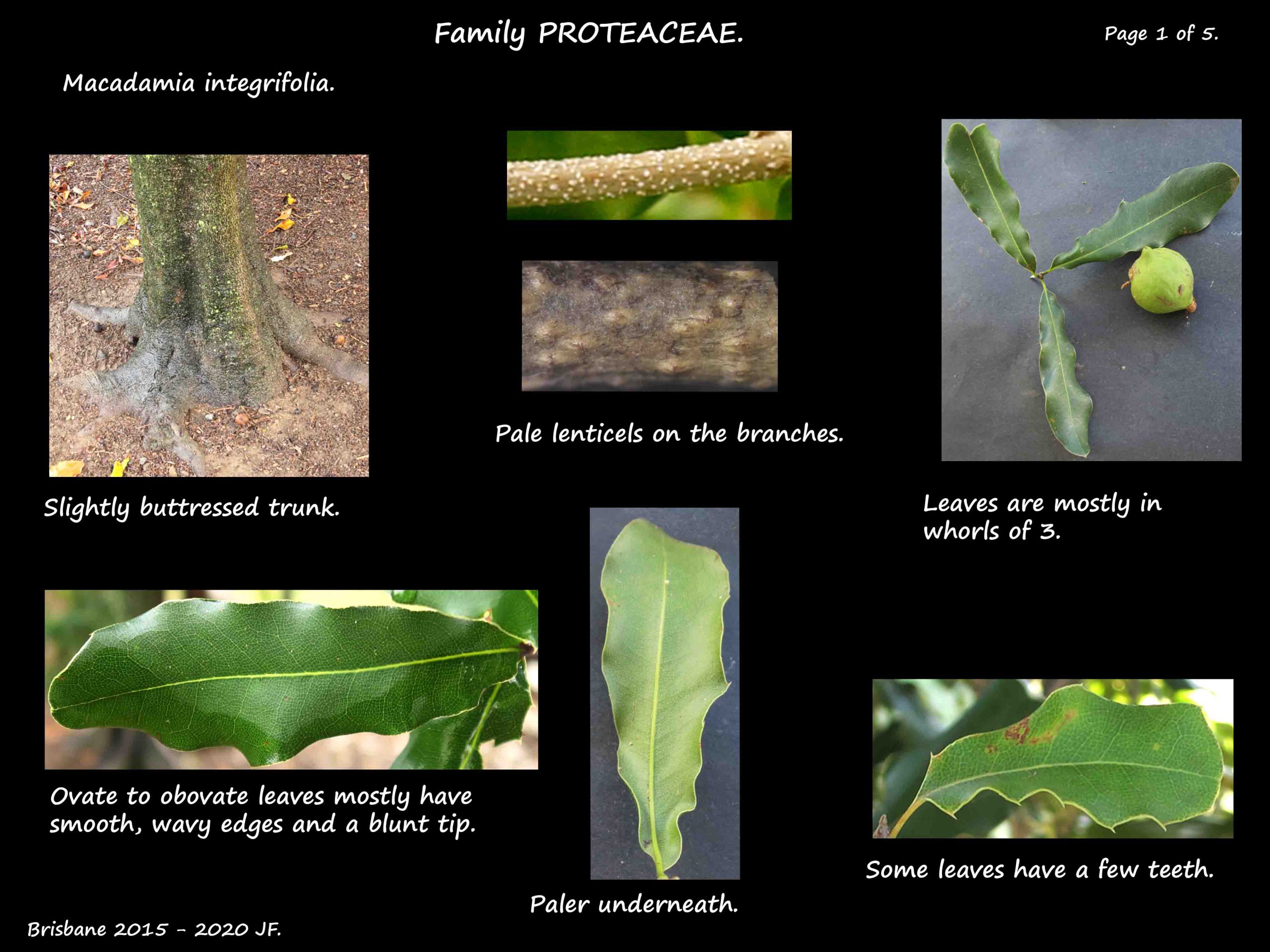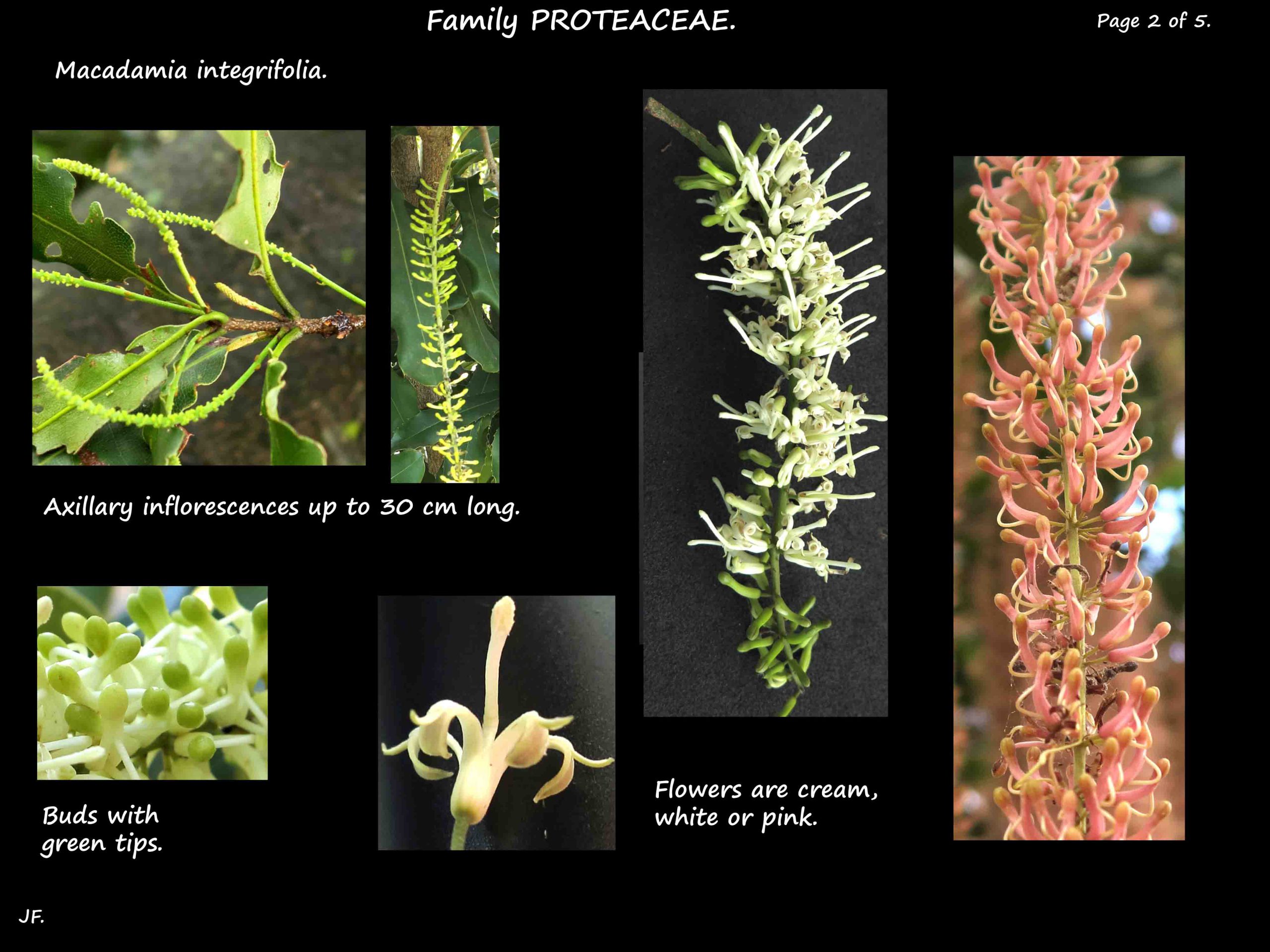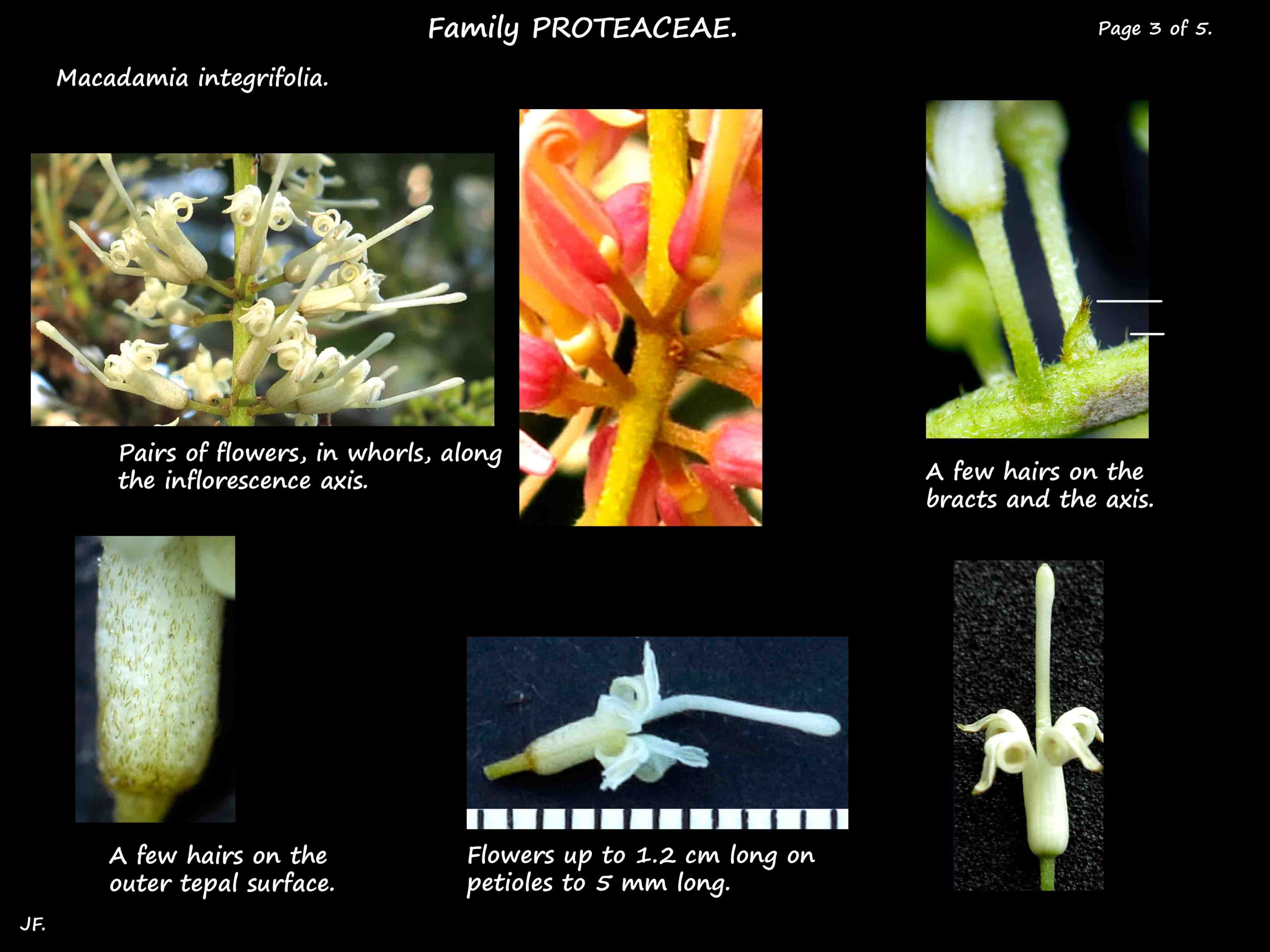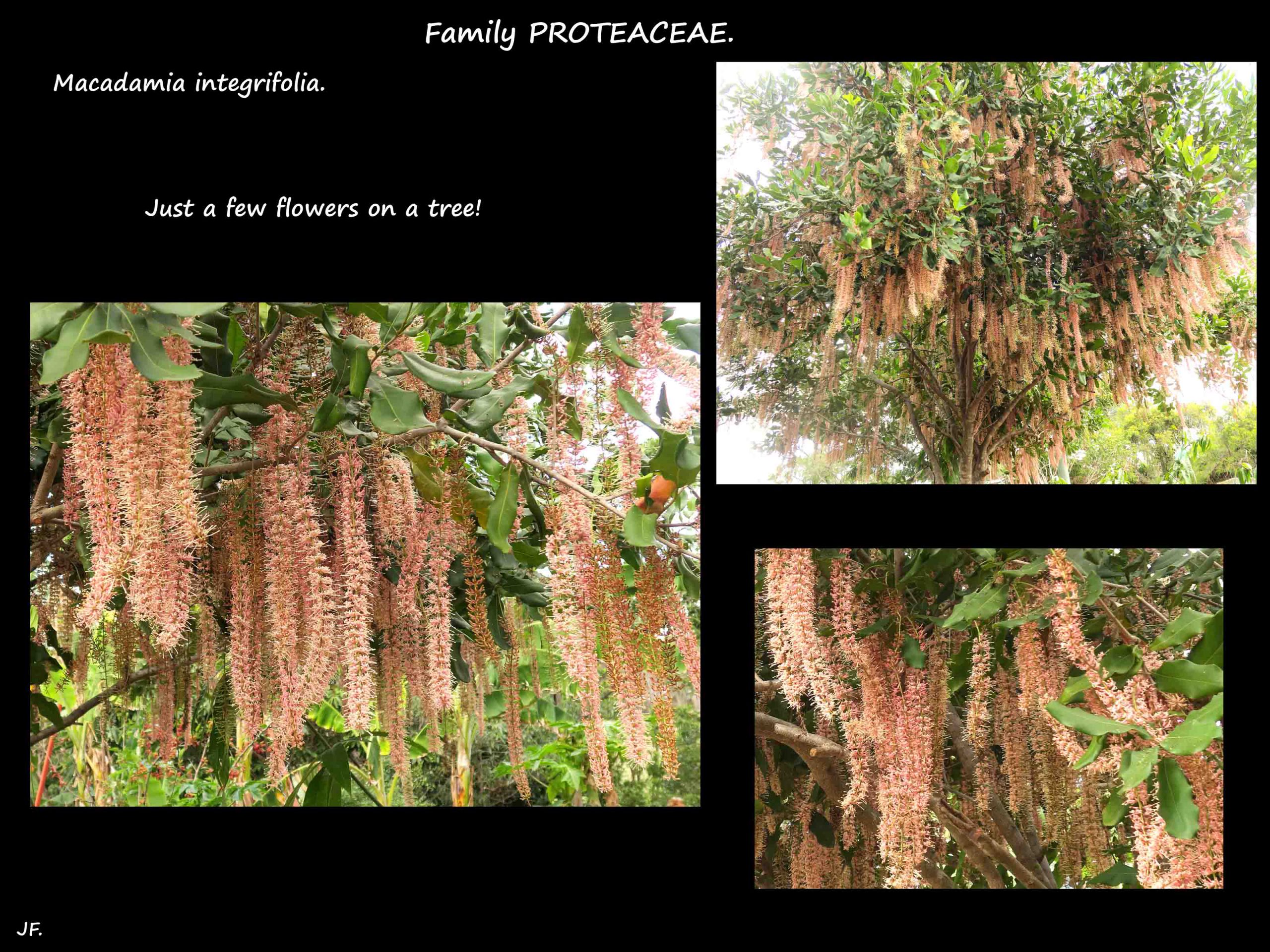Macadamia integrifolia.
In Family Proteaceae, they are native to south east Queensland.
Small to medium, bushy trees up to 20 m high.
The small branches have cream lenticels (nodules).
The leaves are typically in whorls of 3 but occasionally single, paired or whorls of 4.
They are up to 20 cm long, 6 to 10 cm wide and on petioles 1 to 2 cm long.
The blades can be obovate, oblong or ovate and are paler underneath.
The tip is mostly rounded but can be pointed and a mucro may be present.
There are coarse teeth on the whole of the wavy margin.
Some leaves have no teeth or only slightly wavy edges.
Pendulous, unbranched, axillary inflorescences are up to 30 cm long.
There may be a few hairs on the axis and the outer surface of the tepals.
Flowers are up to 1.2 cm long and on stalks up to 5 mm long.
The ovate bracts at the base of the flowers are up to 5 mm long.
The tepals are typically cream but can be white or pinkish.
The roughly 2 mm long anthers are inserted into the tepal tips.
The filaments, up to 7 mm long, are mostly fused to the tepals.
The ovary can be up to 2 mm high and the style 11 mm long.
There are hairs on the ovary and base of the style.
The 1.5 mm slightly dilated style tip has the stigma and pollen presenter.
The globular follicles are up to 4 cm across and have a very hard, woody shell.
Seeds are up to 3 cm long.
J.F.







